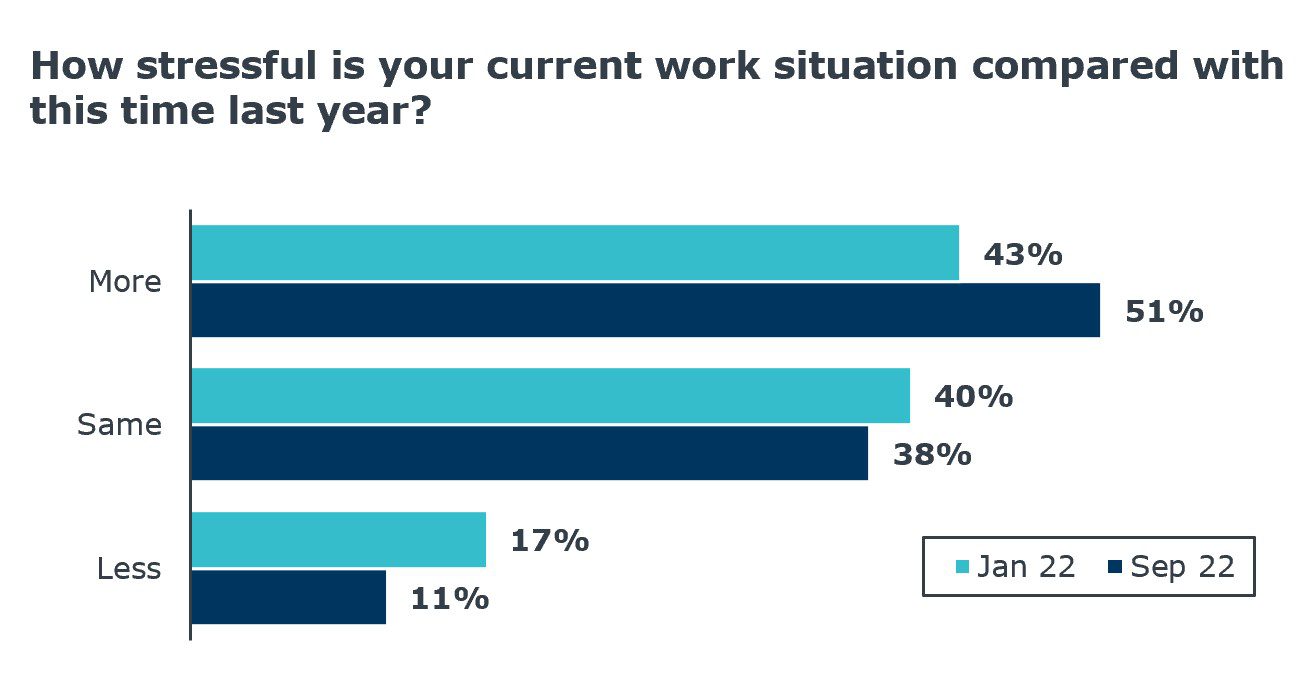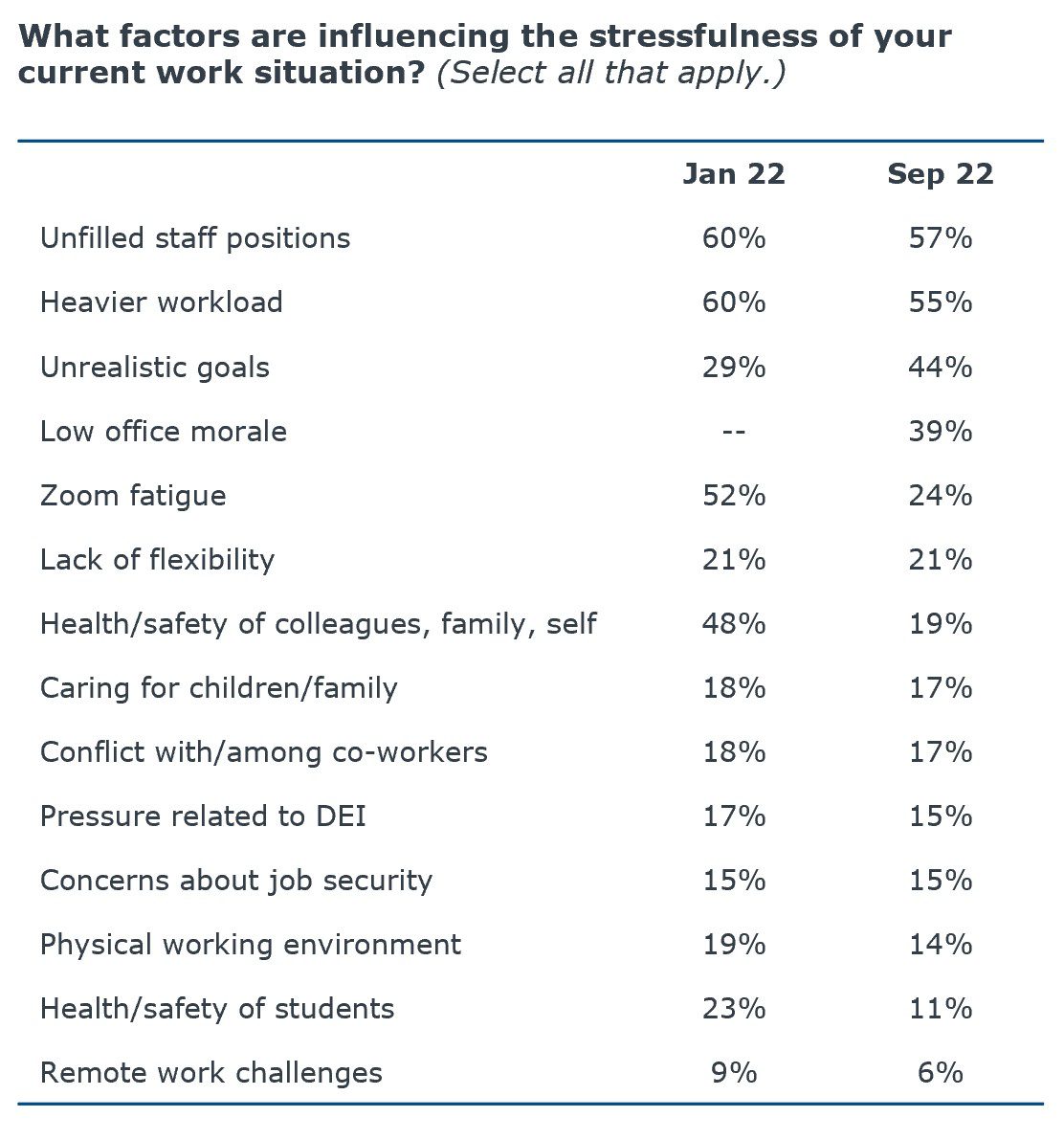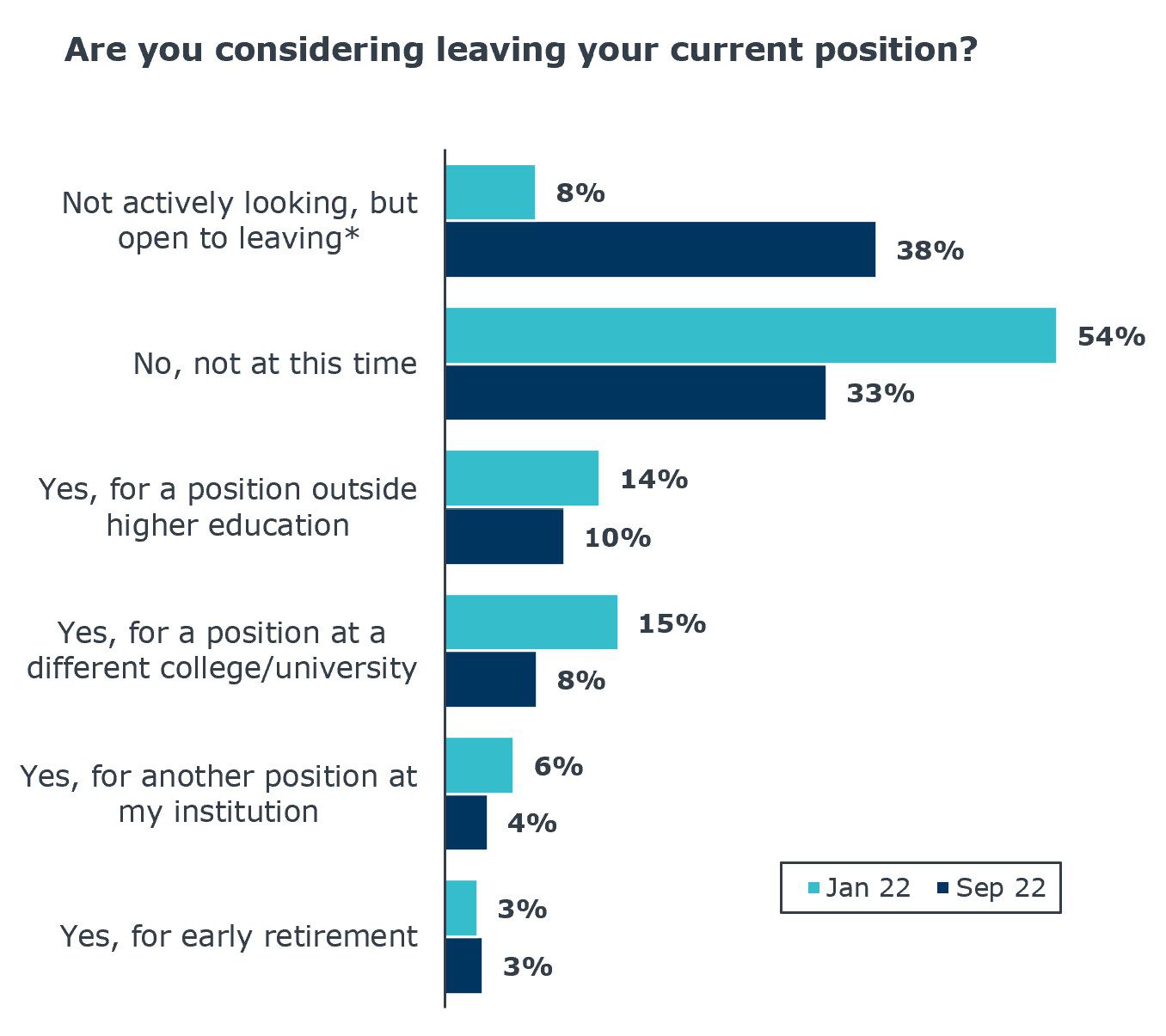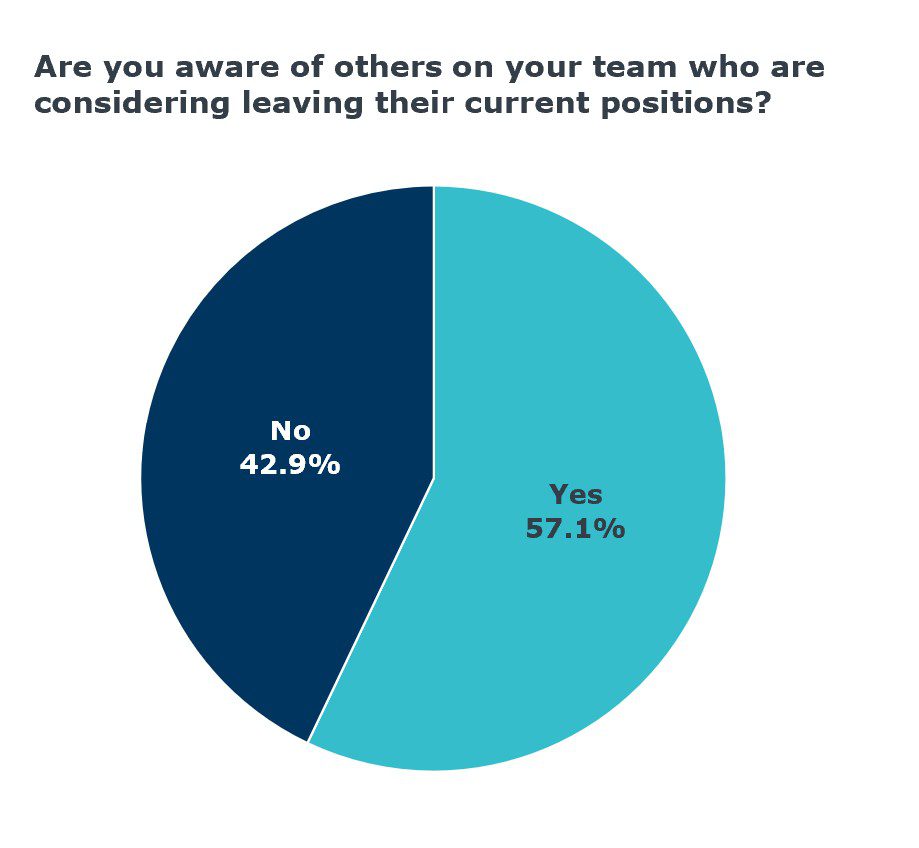Why two thirds of graduate enrollment leaders may leave their jobs
When speaking with graduate enrollment leaders, stress is a frequent topic. I know from experience that being an enrollment manager is challenging, but now it’s even harder than before.
The pandemic changed the landscape for many industries, and higher education was no exception. From 2020-2022, leaders faced several challenges, including surviving early pandemic revenue loss, competing against other institutions, and losing eleven percent of their workforce. As we move into 2023, staffing remains a top concern, especially within graduate enrollment.
- 11% of higher ed workforce lost between 2020-2022
Five Key Factors Accounting for Vanishing Workforce
- Remote work has created a national marketplace for labor
- The number of working-age people in the US is shrinking (projected deficit of 6M workers nationally by 2028)
- Employees developed a taste for flexible work during the pandemic
- Higher ed lags the industry on compensation and flexible work
- The downward spiral of worsening admissions work conditions and staff resignations
EAB Adult Learner Recruitment and NAGAP recently surveyed several hundred graduate enrollment leaders on their current staffing challenges. Here are three key conclusions we observed-and what institutions can do to combat these issues.
Graduate enrollment leaders are becoming more stressed-despite the slowing of the pandemic
With an ever-increasing amount of responsibilities, demands, and expectations, it is no surprise that graduate enrollment leaders feel overwhelmed and stressed. Unfortunately, the sentiment remains unchanged as 54% of employees reported feeling extremely or very stressed at work, up from 49% last year.
Top stressors from leaders include being understaffed, increased workload, and unrealistic goals-in fact, 41% of leaders named “setting realistic enrollment goals” their top operational challenge during the pandemic. Meanwhile, stress related to concerns about the health and safety of students, colleagues, family members, and self has decreased significantly since January. These ongoing stressors are leading to burnout and a decrease in job satisfaction.

Explore 2022’s Takeaways On The State Of Graduate Enrollment
Graduate enrollment leaders feel they are overworked and understaffed
Faced with growing responsibility and workload, many enrollment leaders often face pressure to reach ambitious enrollment targets, which is difficult when there are insufficient resources or staff to get the job done. Our latest survey showed that more than two-thirds of survey participants (68%) indicated they have one or more unfilled positions in their department, up from 61% reporting the same in January.

Overall, these survey results point to the continued need for enrollment leaders to consider how they can manage their resources more effectively to keep up with the demands of their position.
Prepare Your Institution For Today’s Graduate And Adult Learner Market
Over two thirds of graduate enrollment leaders are considering leaving their jobs
With the stress of being overworked and understaffed, many graduate enrollment leaders are considering other options. Two-thirds-or 67%-of participants are considering leaving their current jobs, up from 46% in January. Additionally, 57% of responders reported that they knew someone on their team planning to leave their current position.


Participants looking to leave their role reported better pay, less stress, a better work/life balance, and more organizational support. Sometimes, leaders move on to better opportunities or seek new challenges. But regardless of the reasons, the impact on institutions continues to be significant.
Key Takeaways
With these challenges, what can enrollment leaders do to alleviate stress and help ease the strain of the staffing crisis?
Participants offered several ways to alleviate some of the everyday stress in their work environments, including hiring additional staff, having more flexibility, adding more resources, and receiving greater support from leadership. These findings are similar to the results from the January survey.
Adult Learner Recruitment
Outsourcing marketing functions that require a high degree of expertise, specialization, or time can simultaneously reduce your staff’s workload while also expanding capabilities and expertise.
Addressing staffing challenges requires a holistic approach, including providing adequate support and resources, creating a positive work environment, and setting realistic goals. Schools must also recognize the value of their enrollment leaders and try to invest in their well-being and professional development. By doing so, institutions can build a strong, stable, and effective enrollment team, essential to their success in a highly competitive marketplace.

More Blogs

4 questions domestic students will ask before applying to your graduate program

EAB Wrapped 2025: A year of reckoning—and reinvention—in higher ed
